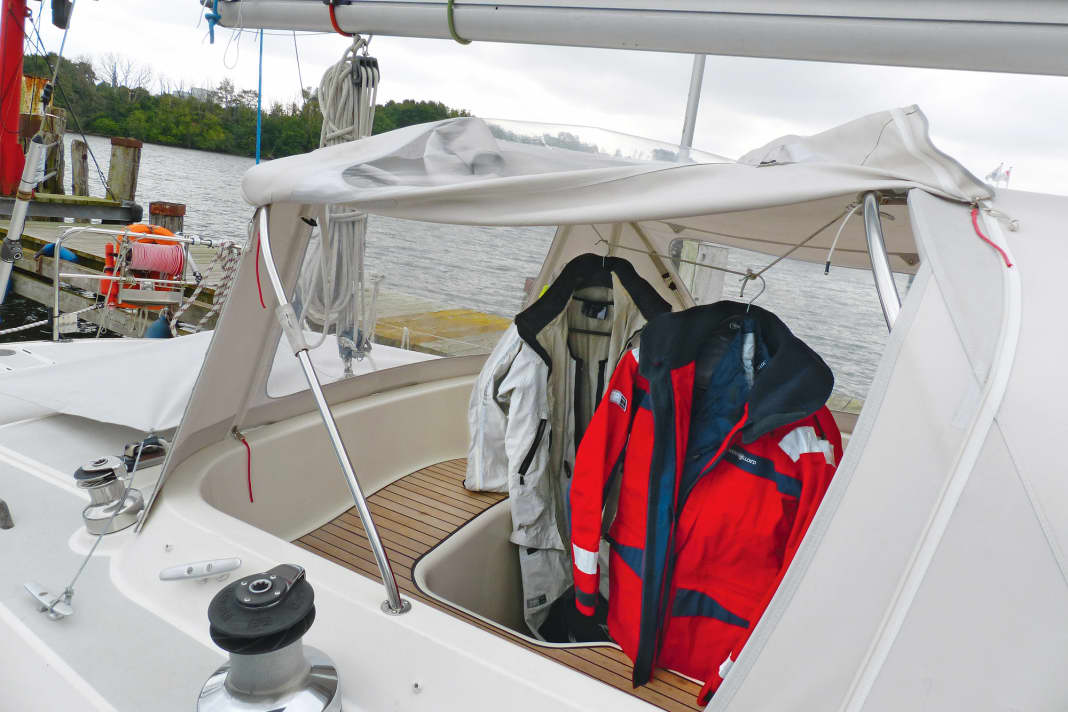





As soon as the first drops fall, the typical scraping sound of sliding hatches and the snapping of locks resounds through the harbour. The crews shelter below deck. After all, they don't want their bunks and upholstery to get wet, and they don't want moisture on board anyway. As soon as the shower has passed, the scenario is reversed and it's time to get out into the air.
This works without any side effects as long as you are on board and can react spontaneously to changes in the weather. But what happens if the shower turns into continuous rain or the crew is not on board during the week? Then measures have to be taken to get the moisture out of the boat.
Rain finds its way below deck
That sounds easier than it sometimes is. As soon as water droplets hit somewhere, they turn into a spray mist that spreads explosively in all directions, depending on the size and force of the impact. Even through the gaps of a deck hatch that is only opened to the smallest ventilation level. In most cases, wind from the wrong side then intensifies the effect.
There are various ways to prevent this - these even make it possible to effectively protect the hatches during longer periods of absence. The simplest method is a tarpaulin that covers a large area and should overhang the edges of the hatch by at least ten centimetres. The greater this overhang, the further the hatch can be left open during a downpour. The fastening straps should be elasticated. A loop in the centre allows the cover to be raised like a tent roof.
Or you can shape the cover like a hood adapted to the dimensions of the hatch with a wide overhanging peak and integrated, fine insect net. This not only keeps the pests out, but also the spray mist.
Another option are so-called ventilation hoods for deck hatches. These are tent parts in the shape of a pram deck, consisting of spinnaker cloth and carbon fibre rods. They are self-supporting and are placed over the open hatch to catch even the slightest breeze and channel it below deck. If you turn them round into the wind, they also keep the rain out. If the integrated insect net is closed, even the spray stays outside.
Flat covers can also be used when travelling. However, they do not protect against splash water.
The sprayhood protects against rain
If you own a sprayhood, you are generally well protected while travelling. However, if the shower comes from aft, the entire cockpit will get wet despite the fixed canopy and the rain will also hit the companionway. To avoid having to use the bulkheads straight away, you can make a small tarpaulin to close the opening. If it is attached elastically with rubber strops, you can simply push it down to get in and out.
On some yachts, the attachment of the lower edge of the sprayhood is designed in such a way that rain and spray water not only run off downwards when the yacht heels, but a good proportion also runs aft on the windward edge. This then drips downwards into the cockpit at the end of the protective cap, obeying the laws of physics. This wetness can be diverted by small wooden or plastic deflectors so that the trickle is channelled directly to the outside of the coaming, where it drains away.
The cake stand is ideal against rain
Cockpit tents, also known as "cake stalls", are a popular choice. Their advantages are undeniable. They extend the living space outside in all conditions. In bad weather, they prevent moisture from entering the interior of the boat unnecessarily. Dripping oilskins can be taken off outside and hung up to dry.
If you prefer to use the oil gear lockers provided for this purpose, you will quickly realise that these are usually far too small and insufficiently ventilated. Even active ventilation only helps to a limited extent, as the oil gear hangs far too tightly. Permanent moisture and spak are the danger.
Even a warm air outlet from the heating into the cupboard is only a compromise. Redirecting the heating air into the wet cell by means of a closable louvre opening works better. This not only makes the crew feel comfortable when needed, it also dries the loosely hung oilskins much more quickly.
Rain on board cannot be avoided, but it is much easier to endure with relatively simple precautions.

